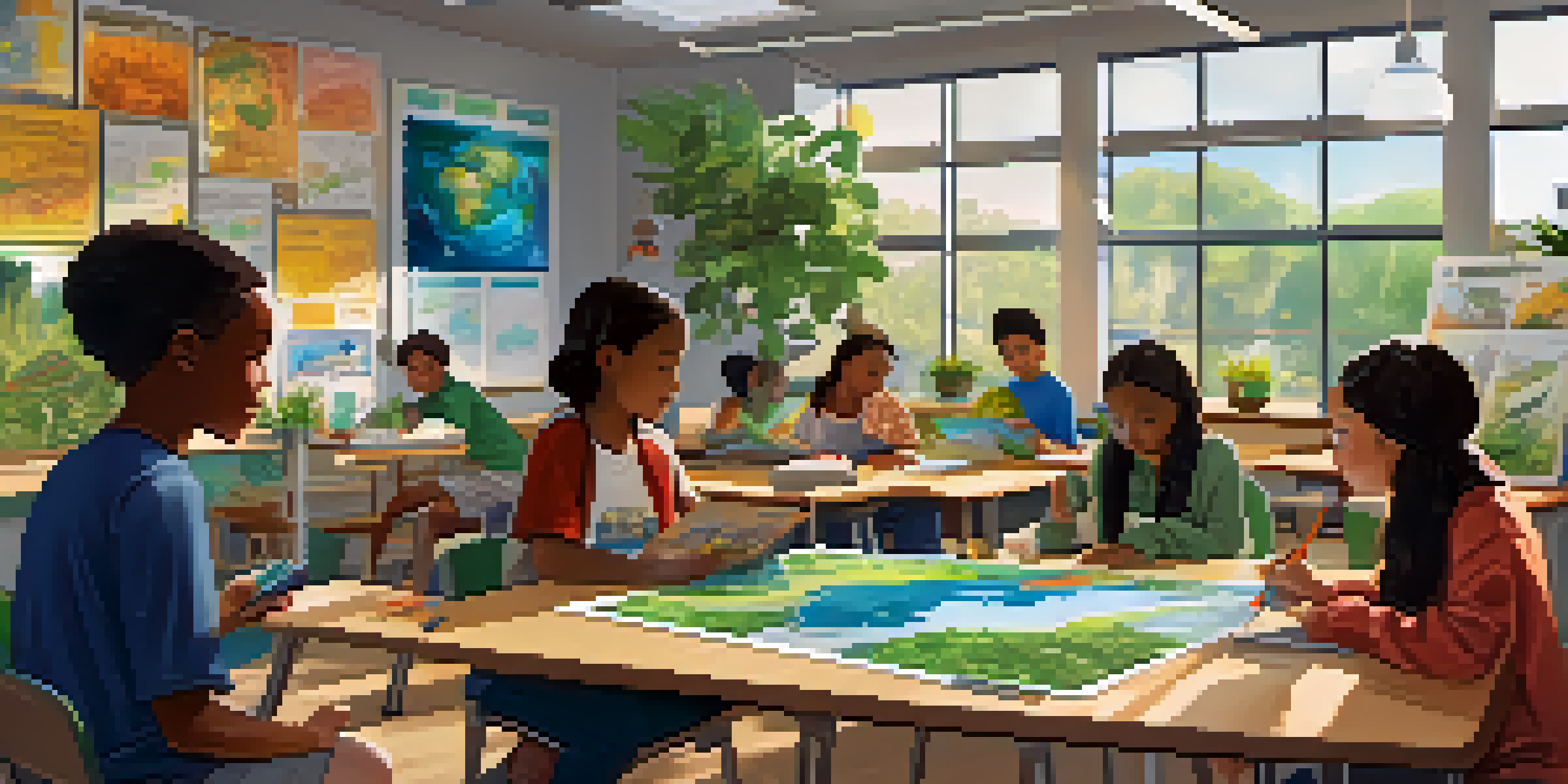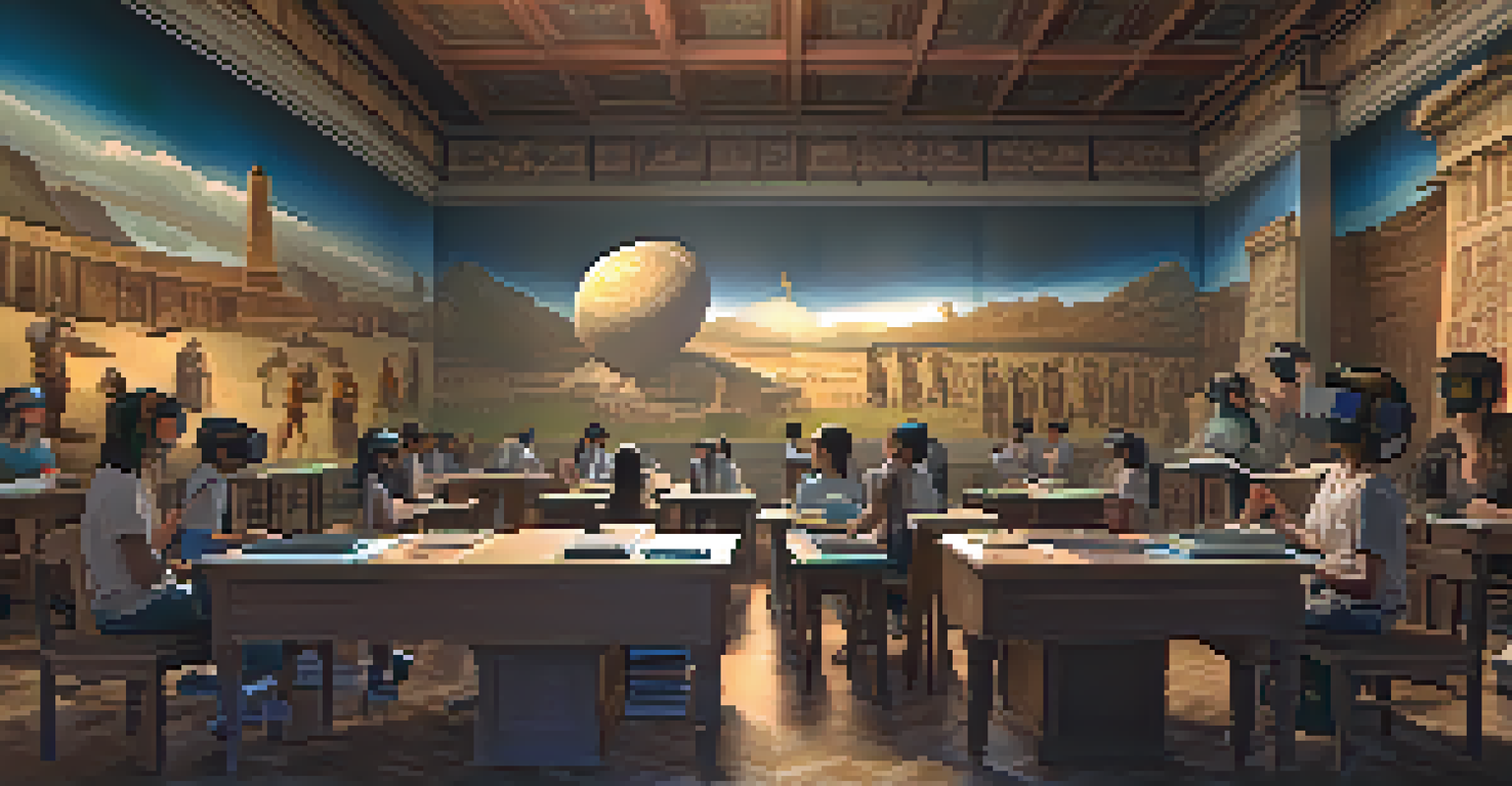Interdisciplinary Learning: Best Practices from Around the World

Understanding Interdisciplinary Learning and Its Importance
Interdisciplinary learning is a teaching approach that integrates knowledge and skills from various disciplines. It allows students to make connections between subjects, fostering critical thinking and creativity. By blending arts, sciences, and humanities, learners can develop a more holistic understanding of complex issues.
The greatest education in the world is that which does not merely give us information but makes our life in harmony with all existence.
For example, a project on climate change could combine science, geography, and social studies. This not only enhances comprehension but also prepares students for real-world challenges that require multifaceted solutions. In today's interconnected world, the ability to think across disciplines is more crucial than ever.
Ultimately, interdisciplinary learning encourages collaboration and communication among students, helping them to appreciate diverse perspectives. Such an approach cultivates a richer educational experience, equipping learners with the skills needed for future success.
Project-Based Learning: A Hands-On Interdisciplinary Approach
One of the most effective practices in interdisciplinary learning is project-based learning (PBL). This method engages students in real-world projects that require them to apply knowledge from multiple subjects. For instance, students might design a sustainable garden, using science for plant biology, math for measurements, and art for aesthetics.

PBL not only enhances engagement but also promotes critical thinking and problem-solving skills. As students navigate through challenges, they learn to collaborate and communicate effectively with their peers. This hands-on approach makes learning more relevant and enjoyable, fostering a deeper understanding of the material.
Interdisciplinary Learning Defined
Interdisciplinary learning integrates knowledge from various fields, promoting critical thinking and creativity.
Schools around the globe have adopted PBL frameworks, with impressive results. For example, the High School for Environmental Studies in New York City has successfully integrated environmental science into various subjects, showcasing how interdisciplinary projects can captivate student interests.
Incorporating Technology: Bridging Disciplines Seamlessly
Technology plays a pivotal role in promoting interdisciplinary learning. Digital tools and resources allow educators to create interactive and engaging lessons that span multiple subjects. For instance, virtual reality can transport students to historical events, blending social studies with technology and immersive learning.
Education is not the filling of a pail, but the lighting of a fire.
Moreover, online platforms enable collaboration among students from different backgrounds, fostering a global perspective. By using tools like Google Classroom, learners can work on joint projects, combining insights from various disciplines and cultures. This not only enhances their understanding but also builds essential skills for the digital age.
As more schools incorporate technology into their curricula, the opportunities for interdisciplinary learning continue to expand. Schools can utilize apps and software that encourage creative problem-solving, allowing students to explore topics in depth and from various angles.
Teacher Collaboration: A Key to Successful Interdisciplinary Learning
For interdisciplinary learning to thrive, collaboration among teachers is essential. When educators from different subjects work together, they can design integrated lessons that resonate with students. For example, a science teacher and an art teacher might collaborate on a project about the human body, combining anatomy lessons with artistic representation.
Such teamwork not only enriches the curriculum but also provides students with a seamless learning experience. Teachers can share insights and strategies, leading to a more cohesive approach to education. This collaborative spirit creates a supportive environment that inspires both educators and students.
Project-Based Learning Benefits
Project-based learning engages students in real-world applications, enhancing their problem-solving and collaboration skills.
Moreover, professional development programs that focus on interdisciplinary strategies can empower teachers to innovate in their classrooms. By learning from one another and sharing best practices, educators can enhance their teaching methods and ultimately improve student outcomes.
Global Perspectives: Interdisciplinary Learning in Different Cultures
Interdisciplinary learning manifests differently across cultures, offering valuable insights into best practices. For instance, Finland's education system emphasizes holistic learning, where subjects are not taught in isolation but rather interconnectedly. This approach nurtures creativity and critical thinking, resulting in high student engagement.
In Japan, the concept of 'Integrated Studies' allows students to explore themes that span various subjects, fostering a deeper understanding of complex societal issues. This cultural perspective highlights the importance of context in designing interdisciplinary curricula, making learning more relevant and meaningful.
By examining these global practices, educators can glean ideas to adapt and implement in their own classrooms. Embracing diverse approaches can enhance interdisciplinary learning, ensuring that students receive a well-rounded education that prepares them for a globalized world.
Assessment Strategies: Evaluating Interdisciplinary Learning
Assessing interdisciplinary learning can be challenging, as traditional testing methods may not effectively capture students' understanding. Instead, educators are exploring alternative assessment strategies that reflect the integrated nature of this approach. For example, performance-based assessments allow students to demonstrate their knowledge through projects, presentations, or creative works.
Rubrics that emphasize collaboration, creativity, and critical thinking can provide a clearer picture of student progress. By focusing on the process as well as the product, educators can better evaluate how well students have grasped interdisciplinary concepts. This shift in assessment encourages learners to take ownership of their learning journey.
Technology Enhances Learning
Technology facilitates interdisciplinary learning by providing interactive tools that foster collaboration across subjects.
Additionally, self-assessment and peer reviews can foster a culture of reflection, helping students understand their strengths and areas for improvement. This holistic approach to assessment aligns with the goals of interdisciplinary learning, promoting deeper engagement and understanding.
Community Involvement: Engaging Stakeholders in Learning
Engaging the community in interdisciplinary learning initiatives can amplify student experiences and outcomes. Local organizations, businesses, and experts can contribute valuable resources, knowledge, and mentorship. For instance, a partnership with a local environmental group could enhance a school's sustainability project, providing students with real-world insights and hands-on experiences.
Community involvement also helps students see the relevance of their learning beyond the classroom. When learners can apply their knowledge to local issues, it fosters a sense of responsibility and connection to their surroundings. This engagement can lead to meaningful projects that benefit both students and the community.

Moreover, inviting parents and community members into the classroom for workshops or presentations can enrich the learning experience. By collaborating with diverse stakeholders, educators can create a vibrant learning ecosystem that supports interdisciplinary education.
The Future of Interdisciplinary Learning: Trends and Predictions
As the landscape of education evolves, interdisciplinary learning is poised to play a crucial role in shaping future curricula. Trends such as personalized learning and competency-based education are driving the need for integrated approaches that cater to diverse learning styles. This shift encourages educators to design lessons that resonate with students' interests and strengths.
Furthermore, the rise of global collaboration tools means that students can connect with peers internationally, working on projects that transcend geographical boundaries. This not only enriches their learning experience but also prepares them for a workforce that values cross-cultural communication and collaboration.
Looking ahead, the challenge will be to ensure that interdisciplinary learning remains dynamic and relevant. By continuously adapting best practices from around the world and embracing innovative teaching methods, educators can create a future where interdisciplinary learning flourishes, equipping students with the skills they need to thrive.